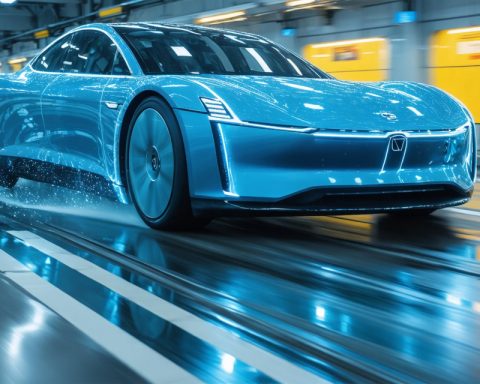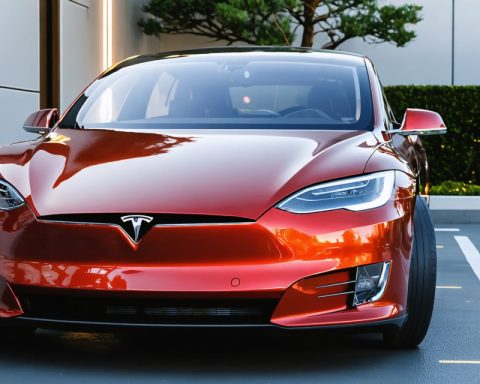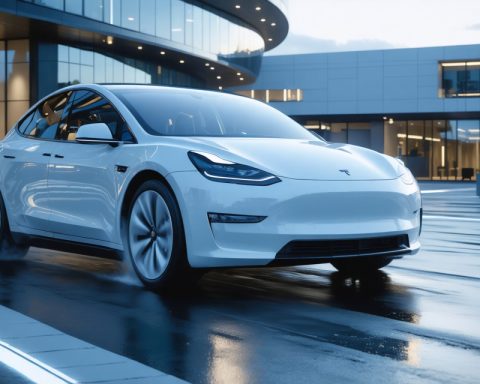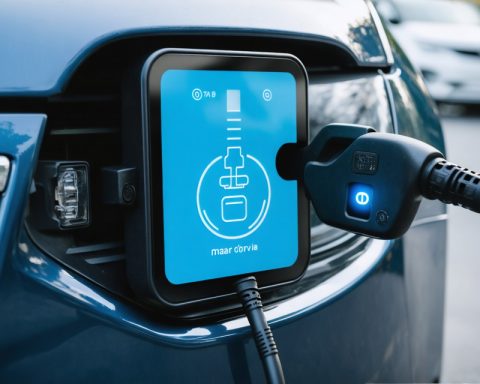- Regenerative braking captures energy lost during braking and converts it into electricity, enhancing EV efficiency.
- This technology extends the driving range by allowing recaptured energy to power the vehicle.
- Regenerative braking reduces wear on brake systems, leading to less frequent brake pad replacements and cost savings.
- Drivers can experience “one-pedal driving,” which adds smoothness and enjoyment to the driving experience.
- As EV adoption grows, understanding regenerative braking becomes crucial for maximizing vehicle performance and sustainability.
- Regenerative braking represents a blend of technological innovation and energy conservation, contributing to a sustainable future.
Electric vehicles (EVs) continue to turn heads with their innovation and efficiency, but one unsung hero in their arsenal remains the transformative power of regenerative braking. Imagine capturing the energy typically lost during braking and reusing it to power your journey—this is the magic of regenerative braking.
When the driver takes their foot off the accelerator, the EV does something remarkable. Traditional cars would waste the kinetic energy generated during braking, releasing it as heat. However, an EV harnesses that energy using electric motors, converting it back into electricity, and allowing you to travel further on a single charge. It’s akin to watching a magician pull coins from behind an ear—energy that seemed to have vanished returns to your vehicle’s battery, silently and seamlessly.
This technology not only enhances the driving range but also reduces wear on the vehicle’s braking system. Your car maintains momentum with less frequent need for brake pad replacements, which can burn a hole in your wallet over time. In fact, some drivers report extending their brake lifespan by tens of thousands of miles.
The experience behind the wheel changes, too. When engaging in this energy recovery process, drivers feel the car slowing down more noticeably, a phenomenon often described as “one-pedal driving.” Mastering this driving technique can not only smooth the ride but add a layer of fun to daily commutes, turning conventional wisdom about driving on its head.
As more consumers turn to EVs, understanding this exceptional benefit becomes increasingly important. The takeaway? Next time an EV slides silently beside you, know that it embodies technological brilliance—nay, wizardry—in turning everyday actions into energy-saving miracles. The road to a sustainable future lies not just in smarter engines, but in smarter driving, capturing the energy of the world, one stop at a time.
The whisper of progress sings from each brake pedal depression, promising not only a better drive today but a sustainable tomorrow, crafted through the seamless interplay of innovation and nature. Welcome to the future—a future powered by the hidden world of regenerative braking.
Regenerative Braking: The Silent Revolution Behind Electric Vehicles
Electric vehicles (EVs) promise to transform the automotive industry, and at the heart of this transformation is an often-overlooked yet powerful technology: regenerative braking. This system recaptures energy usually lost during braking and reintegrates it into the vehicle’s battery, extending range and improving efficiency. Here’s everything you need to know about regenerative braking and its role in shaping the future of transportation.
How Regenerative Braking Works
When you lift your foot off the accelerator in an EV, the vehicle initiates a process where electric motors switch roles, becoming generators that convert kinetic energy back into electrical energy. This contrasts with traditional vehicles, where braking systems convert kinetic energy to heat, wasting valuable energy in the process. This reverse process can replenish the battery, allowing for greater efficiency and longer travel distances on a single charge.
Benefits of Regenerative Braking
1. Extended Range: Regenerative braking recycles energy, which can extend the range of an EV by up to 20%, depending on driving conditions and styles.
2. Reduced Brake Wear: By utilizing regenerative braking, the need for mechanical braking is lessened, resulting in less wear on brake pads and discs, potentially saving drivers significant maintenance costs.
3. Enhanced Driving Experience: Many EV drivers appreciate the “one-pedal driving” experience, where lifting off the throttle significantly slows the car, creating a more engaging and intuitive driving experience.
Real-World Use Cases
– Urban Commuting: Regenerative braking is particularly effective in stop-and-go traffic, common in urban settings, as frequent braking recaptures and repurposes energy, boosting efficiency.
– Hilly Terrains: In areas with frequent elevation changes, regenerative braking turns downhill momentum into reusable energy, providing a marked advantage in range.
Controversies & Limitations
While regenerative braking has notable benefits, it also has limitations and potential downsides:
– Reduced Efficiency at High Speeds: At higher speeds or when the battery is nearly full, the efficiency of regenerative braking diminishes.
– Learning Curve: Some drivers may find the transition to “one-pedal driving” challenging, requiring adjustment to the car’s braking feel and handling.
Market Forecasts & Industry Trends
As battery density and efficiency improve, the effectiveness of regenerative braking will increase, contributing to longer EV ranges and faster charging times. According to industry reports, the global market for regenerative braking systems is poised to grow as more automakers integrate electric and hybrid vehicles into their lineups.
Pros & Cons Overview
Pros:
– Increases vehicle range
– Reduces wear on traditional brake components
– Enhances driving efficiency and experience
Cons:
– Limited effectiveness at high speeds
– Can require adjustments in driving habits
Actionable Recommendations
If you are considering an EV, test-drive a model equipped with regenerative braking to experience “one-pedal driving” firsthand. Practice in low-traffic areas to master this innovative driving style, maximizing your enjoyment and efficiency. Selecting a vehicle brand with a fully integrated regenerative system, like a Tesla or a Nissan Leaf, could provide seamless transitions and optimized energy recovery.
Conclusion
Regenerative braking is a key component of modern EVs, driving advancements in vehicle efficiency and sustainability. As our roads welcome more electric vehicles, embracing this technology is essential for environmentally conscious driving. The integration of regenerative systems not only highlights automotive innovation but also accelerates us toward a sustainable tomorrow.
For more insights into electric vehicle technology and sustainable advancements, visit Tesla or Nissan.























